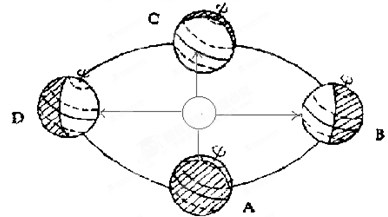Questions 19-25
·
Read the following article from a magazine and answer questions 19-25.·
For questions 19-25, choose the correct answer A, B, C or D.·
Mark your answer on the Answer Sheet.The Big Easy on the Brink
A Category 5 hurricane would come barreling out of the Gulf of Mexico, It would cause Lake Pontchartrain, north of New Orleans, to overflow, pouring down millions of gallons of water on the city. Then things would really get ugly. Evacuation routes would be blocked. Buildings would collapse. Chemicals and hazardous waste would dissolve, turning the floodwaters into a lethal soup. In the end, what was left of the city might not be worth saving. "There’s concern it would essentially destroy New Orleans," says Suhayda, a water-resources expert at Louisiana State University.
New Orleans has always had a complicated relationship with the water surrounding it. Everyone told the first settlers this was the wrong place to build a city. It is wedged precariously between the mighty Mississippi and Lake Pontchartrain, and most of it was once swampland. Aggravating the problem is the fact that much of New Orleans is below sea level, so that after a good rain, the water just settles in. There is now a decent pumping system, which helps. Old-timers, however, still talk of the days when, after a bad storm, bodies were washed out of the cemeteries.
What is threatening New Orleans is a combination of two man-made problems: more levees and fewer wetlands. The levees installed along the Mississippi to protect the city from water surges have had an annoying effect: they have actually make it more vulnerable to flooding. That’s because New Orleans has been kept in place by the precarious balance of two opposing forces. Because the city is constructed on 100 feet of soft silt, sand and clay, it naturally "subsides", or sinks, several feet a century. Historically, that subsidence has been counteracted by sedimentation: new silt, sand and clay that are deposited when the river floods. But since the levees went up-mostly after the great flood of 1927—the river has not been flooding and sedimentation has stopped.
New Orleans’ other major man-made problem is that its wetlands and its low-lying barrier islands are disappearing. The Louisiana coast is losingl6,000 acres of wetland each year, mostly as a result of population expansion into once pristine areas, destructive oil and gas drilling, pollution and land loss through lack of sedimentation. As it turns out, wetland, and barrier islands aren’t just nice to look at; they are also a key natural barrier to hurricanes. (Every 2.7miles of wetland absorbs a foot of storm surge.) As the wetlands go, the chance of a hurricane blowing the city away grows.
So far, little has been done to save the city. However, while the grimmest of the doomsayers warn that New Orleans could be next Atlantis, some laid-back residents are saying that it could just as easily become the next Venice and that after the flood, the good times won’t roll—they’ll float.
The purpose of building levees was to ______.
A.keep the city from sinking
B.better the view of the city
C.protect the city from being flooded
D.keep a balance between Mississippi and Lake Pontchartrain


